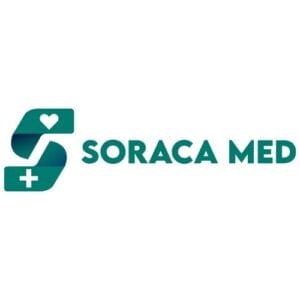Limb lengthening
Limb lengthening surgery in Turkey is a medical procedure designed to address uneven limb lengths, whether in the legs or arms. This surgery can be performed for both medical and cosmetic reasons, such as correcting limb length disparities caused by birth defects, polio, cerebral palsy, or bone injuries. Additionally, some individuals may seek limb lengthening for cosmetic height increase, typically between the ages of 18 and 25.
What is Limb lengthening Surgery
Limb lengthening surgery is a medical procedure that aims to correct unequal lengths or sizes of an individual’s legs or arms. The procedure can be performed for both aesthetic reasons, such as increasing height for cosmetic purposes, and medical reasons, including correcting limb length disparities caused by birth defects, polio, cerebral palsy, or bone injuries. The bones targeted for lengthening can include the humerus, radius/ulna, femur, tibia, and metatarsals.
In cases where limb lengthening is medically indicated, the primary goals are to minimize or prevent joint damage, reduce malpositions of the feet or legs, and alleviate strain on the spine for overall health reasons. The procedure involves stretching the surrounding muscles, tendons, and ligaments, in addition to lengthening the patient’s bone.
Limb lengthening surgery in Turkey is an option for individuals seeking this procedure. It is commonly pursued by those with limb length differences due to various causes, and it may also attract individuals interested in cosmetic height increase. The surgery is typically considered once the bones have reached full capacity, which is often between the ages of 18 and 25. Adults with a leg length difference of at least two centimeters may also undergo the procedure.
It’s important to note that limb lengthening surgery is a gradual and time-consuming process, taking months to achieve the desired results. Patients and their families should have a comprehensive understanding of the procedure, including its potential side effects and alternative treatment options. One of the reasons individuals opt for limb lengthening surgery in Turkey is the potential cost savings, as medical treatments in Turkey may be more affordable compared to some other countries, such as the USA or UK.
Ultimately, individuals considering limb lengthening surgery, whether for medical or cosmetic reasons, should carefully weigh the benefits, risks, and costs associated with the procedure and make informed decisions based on their specific circumstances.
By how many centimeters can legs be lengthened, in Turkey
In the realm of modern cosmetic surgery, surgeons can now effectively tackle leg length differences ranging from 14 to 20 centimeters. A fundamental principle guiding limb lengthening procedures is that the magnitude of the limb length disparity requiring correction directly correlates with the duration of the treatment.
A predominant method in limb lengthening is the widely adopted intramedullary nailing technique, which has largely supplanted the use of external fixators. Originally designed for treating long bone fractures, the intramedullary nail technique has evolved to facilitate the precise lengthening of leg bones.
This innovative approach involves the use of a stainless steel implantable intramedullary nail to address variations in leg lengths. Notably, this technique obviates the need for the previously utilized external fixator—a metal framework resembling a cage that encased the leg to promote bone formation. The intramedullary nail, representing a more advanced methodology, achieves the same objective without relying on an external framework.
It’s crucial to recognize that the selection of the method and the achievable extent of lengthening may vary based on individual factors. Therefore, consultation with a qualified surgeon is paramount to determine the most suitable approach tailored to the patient’s specific circumstances.
Treatment Steps for Limb Lengthening Surgery in Turkey
Limb lengthening in Turkey involves a systematic process to achieve the desired results. The key steps are as follows:
- Sectioning of the Shorter Upper or Lower Leg Bone: The procedure begins with the precise sectioning of the shorter upper or lower leg bone by the surgeon.
- Insertion of the Titanium Intramedullary Nail: The surgeon inserts a 25-centimeter-long titanium intramedullary nail into the bone sections. This specialized nail plays a crucial role in the lengthening process.
- Merging Treated Bone for New Bone Formation: Following the insertion of the intramedullary nail, the treated bone is carefully merged to facilitate the formation of new bone. This step is essential for the overall success of the limb lengthening surgery.
After the insertion of the nail, a rod-equipped tube is connected to the lower part of the leg. The lower leg undergoes controlled movements back and forth approximately 15 times a day, creating a one-millimeter increase in the distance between the bone parts. This treatment stimulates the gradual formation of new bone. Patients continue these rotational movements until the desired leg length is achieved, typically within about three months, resulting in a limb lengthening of five to ten centimeters.
To initiate bone lengthening, an intramedullary nail is inserted through a 1.5-centimeter incision at the hip or knee. The approximately 25-centimeter-long nail is secured to the bone using screws after cutting through the femur or lower leg bone. The nail can be lengthened magnetically or mechanically, pulling the bone apart at a rate of usually half a millimeter to one millimeter per day. Over time, new bone mass develops in the gap, gradually ossifying. The natural growth of muscles and tendons accompanies this process.
Note: During this stage, the treated bone remains relatively soft. To ensure sufficient stabilization, the intramedullary nail must remain in the body for one and a half to two years. Callus formation contributes to the stabilization of the bones.
Pros and Cons of Limb Lengthening Surgery
Limb lengthening surgery is a controversial topic in aesthetic medicine. Most German specialists are skeptical about leg lengthening for purely cosmetic reasons. Another case is when the intervention is medically indicated.
Advantages:
- The result of the operation is permanent.
- Relatively low risks (with the intramedullary nailing technique).
- In the case of medical necessity, health insurance companies bear part or all of the costs.
Disadvantages:
- Very high costs (in the case of surgeries for cosmetic reasons).
- Relatively long recovery time.
- Intensive follow-up measures are necessary.
- Low selection of doctors (for leg lengthening without medical indication).
Is Limb Lengthening Surgery in Turkey Painful?
Patients undergoing limb lengthening surgery may experience varying levels of pain, and pain management is a crucial aspect of the recovery process. In the first few days after the operation, patients tend to use painkillers based on their individual needs. The perception of pain during the lengthening itself can vary among patients.
In some cases, individuals may notice that stretching a lot helps to reduce the discomfort associated with the lengthening process. Adjusting the daily extension based on the patient’s comfort level is a strategy for coping with pain. If a patient experiences significant discomfort, the daily extension can be reduced to a more tolerable level.
Conducting a detailed assessment before the operation is extremely important to ensure the patient’s capacity to tolerate the stretching involved in the limb lengthening process. This assessment is considered an absolute prerequisite.
Especially in limb lengthening surgeries performed in Turkey, they are generally described as painless. However, if a patient experiences pain during the recovery process, surgeons in Turkey enhance patient comfort by prescribing and administering prescription pain relievers.
How Long Does the Rehabilitation Last, and When Can You Move Freely Again?
The duration of rehabilitation and the resumption of normal activities after limb lengthening surgery depend on the extent of the lengthening. For instance, if the extension lasts for 1.5 months, it typically takes about three months for the bone to solidify. The effectiveness of the stretching, as well as the bone development, are crucial factors.
After this initial period, patients can gradually reintroduce exercises at home, such as using an exercise bike. The progression of loads should be gradual. When the intramedullary nail is removed after approximately one to 1.5 years, some caution is advised for a few additional weeks, avoiding activities like jumping from great heights, for instance. In up to one percent of cases, there may be a risk of bone breakage during this phase, influenced by factors like the choice of nail and its diameter. Individual recovery experiences may vary, and adherence to medical advice is essential for a successful rehabilitation process.
What Is The Cost Of Limb Lengthening Surgery In Turkey?
The average cost for limb lengthening surgery in Turkey starts from USD 15,000. Turkey stands out as one of the leading destinations for surgical procedures globally. Despite providing the same level of technology and services, limb lengthening surgery in Turkey is approximately 90% more affordable than in other countries. With a growing number of medical tourists choosing Turkey for healthcare and treatment, it has become a primary destination for those considering surgery. If you are contemplating surgery, Turkey should be your top choice.
Patients typically spend five days in the hospital and an additional fifteen days elsewhere during the recovery period. The overall cost of treatment is influenced by factors such as the patient’s diagnosis and the facilities they select. The cost of limb lengthening surgery in Turkey typically ranges between USD 12,000 and USD 25,000. Choosing Turkey for limb lengthening surgery not only ensures quality medical care but also offers significant cost savings compared to other nations.
Frequently Asked Questions About Limb Lengthening Surgery
How is limb lengthening surgery performed in Turkey?
Limb lengthening surgery in Turkey is conducted by expert surgeons. The procedure typically involves the use of the intramedullary nailing technique, where a specialized nail is inserted into the bone to support and lengthen the shortened limb. This advanced surgical approach is widely practiced by skilled medical professionals in Turkey.
What are the potential risks associated with limb lengthening surgery in Turkey?
Limb lengthening surgery in Turkey, particularly when utilizing the intramedullary nailing technique, is associated with relatively low risks. However, as with any surgical procedure, there are potential risks such as infection, nerve damage, or complications related to anesthesia. These risks are carefully managed by experienced medical teams to ensure patient safety.
How long does the rehabilitation process take after limb lengthening surgery in Turkey?
The duration of rehabilitation following limb lengthening surgery in Turkey depends on the extent of the lengthening. On average, it may take several months for the bone to solidify after the initial extension period. Physical therapy and gradual reintroduction of activities are key components of the rehabilitation process, tailored to each patient’s specific case.
What is the cost of limb lengthening surgery in Turkey?
The cost of limb lengthening surgery in Turkey varies but is generally more affordable compared to other countries. The average cost starts from USD 15,000, making Turkey an attractive destination for those seeking quality medical care with cost-effectiveness.
Can health insurance cover the expenses for limb lengthening surgery in Turkey?
In cases where limb lengthening surgery is medically necessary, health insurance companies may partially or fully cover the costs. However, for cosmetic reasons, the expenses are usually the responsibility of the patient.
When can patients resume normal activities after limb lengthening surgery in Turkey?
The timeline for resuming normal activities varies based on the lengthening achieved and the individual’s response to rehabilitation. Generally, patients can start gradually reintroducing activities such as using an exercise bike at home after the initial recovery period.
Are there specific precautions to take during the post-surgery period in Turkey?
After the intramedullary nail is removed, patients are advised to exercise caution for a few weeks, avoiding activities like jumping from great heights. This precaution helps minimize the risk of bone breakage during the final phase of recovery.
How do I choose a qualified surgeon for limb lengthening surgery in Turkey?
Selecting a qualified surgeon for limb lengthening surgery in Turkey involves thorough research. Look for surgeons with experience in this specific procedure, check patient reviews, and ensure that the medical facility meets international standards. Consulting with multiple experts can help make an informed decision.








